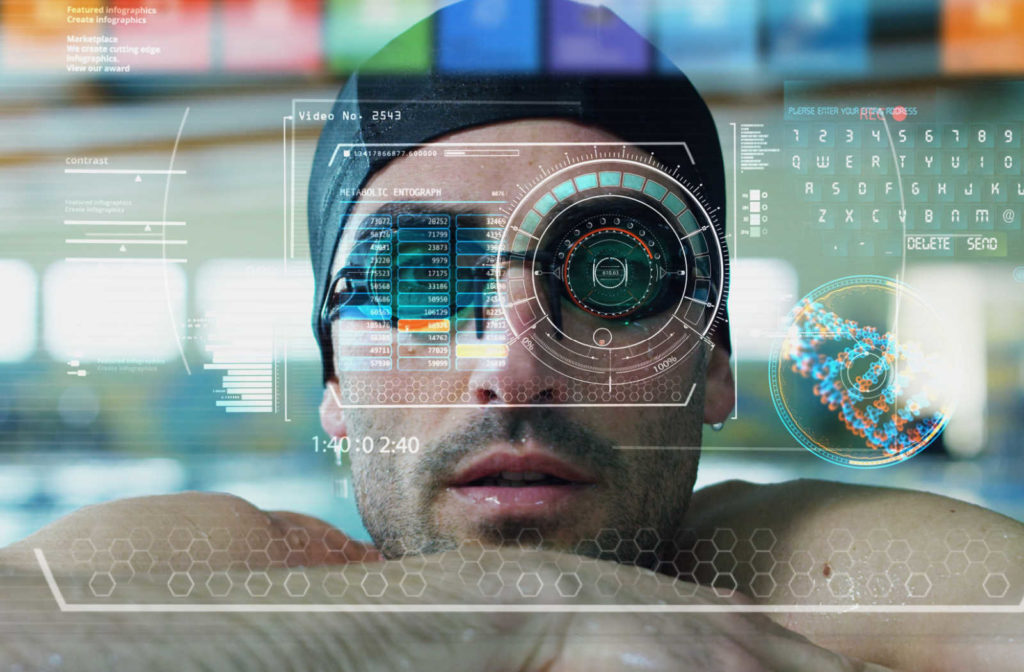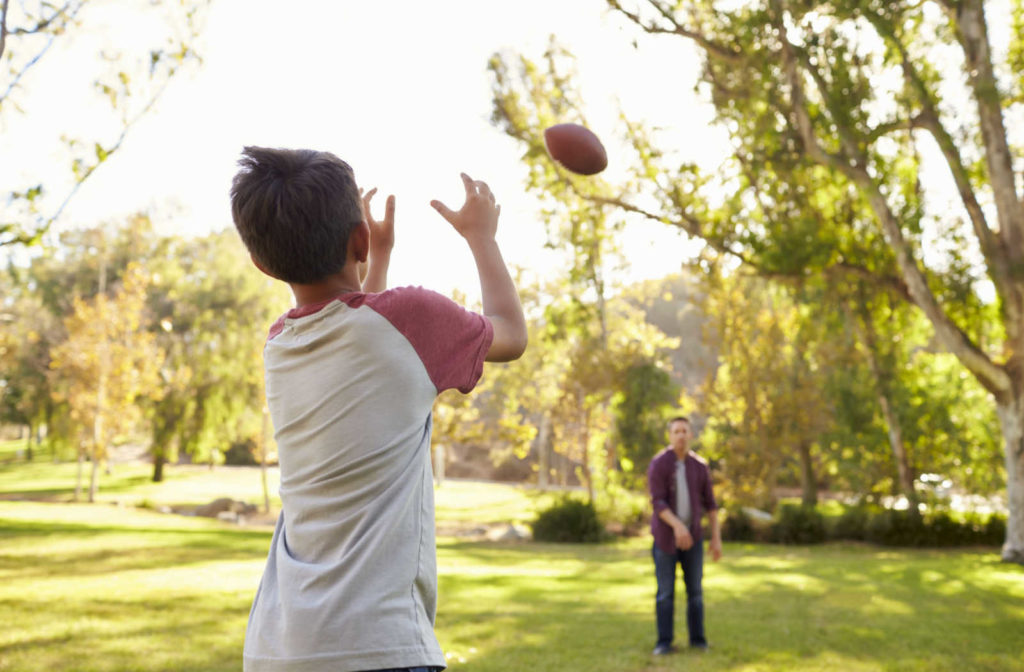Hand-eye coordination is a visual skill you use every day without even knowing it! You use this skill when you write, drive, or play sports. If you have hand-eye coordination-related difficulties, how can you improve this skill?
Continue reading to learn more about hand-eye coordination, including what it is and how you can improve it.
What Is Hand-Eye Coordination?
Hand-eye coordination is the ability to coordinate your hand and sight to work together, completing a specific task. For example, you need hand-eye coordination to hit or catch a ball. You generally don’t even notice yourself using this skill during the day—it’s an automatic process you use when doing things like:
- Driving
- Exercising
- Playing sports
- Typing
- Writing
- Playing a video game
Your eyes, brain, and body must work together to complete different visual skills, from tracking targets to catching objects. You can have development problems related to visual skills like hand-eye coordination, or it can worsen with time, making tasks more difficult.
Why Can Hand-Eye Coordination Worsen?
It’s common for hand-eye coordination to worsen with time. Communication throughout the brain isn’t as strong with age, making hand-eye coordination more difficult.
Besides age, neurological conditions may affect hand-eye coordination, occurring because of age, genetics, or injury. If you have hand-eye coordination issues, how can you improve this visual skill?
How Can You Improve Hand-Eye Coordination?
You’re not out of luck if you have poor hand-eye coordination—several activities can help improve this skill. Some you can do at home, while others involve visits to your doctor.
You can address your hand-eye coordination with several activities, including:
- Swimming: Swimming is an aerobic exercise that can improve your hand-eye coordination & balance. It’s a low-impact exercise you can enjoy at any age.
- Tai Chi: Tai Chi involves stretching & balance exercises, improving hand-eye coordination. A 2014 study found Tai Chi can improve hand-eye coordination by 20%.
- Juggling: Catching & juggling objects can help you focus on hand-eye coordination. Try tossing a ball into the air & catching it repeatedly or juggling 2 or more balls at once.
- Regular eye exams: Your sight may affect your hand-eye coordination, so ensure you book consistent appointments with your doctor. They can examine your eyes & determine if you’re experiencing any eye conditions.
Your doctor can help with more than eye exams to improve your hand-eye coordination. If they offer it, sports vision training can help improve this visual skill.

What Is Sports Vision Training?
Sports vision training, or sports vision therapy, is a way to improve your visual skills. While sports typically require vision, it’s more than seeing clearly.
Experts estimate that approximately 80% of perception in sports comes from your vision. If you play a fast-paced sport, poor visual skills can affect your ability to perform well. Sports vision training helps improve these skills, benefiting your play.
Your doctor tests your visual skills to find areas of concern. After their assessment, they can help you train these weaker skills to improve your vision.
Sports vision training can help improve several skills, including:
- Visual reaction time
- Visual tracking
- Binocular vision
- Depth perception
- Hand-eye and foot-eye coordination
- Eye focusing
- Peripheral vision
- Visual processing & perceptual skills
Is Sports Vision Training Effective?
Vision affects almost anyone’s sports performance. You need binocular vision to judge distances and remember information around you to score a goal, make a pass, or avoid a hit.
An 8-week study found promising results for sports vision training, showing that several skills improved. Improvement stayed 4 weeks after the study, showing lasting outcomes for the participants.
What Can You Expect During Sports Vision Training?
You can expect several steps during sports vision training. To start, your doctor will test different visual skills related to sports. Testing these skills helps them create a report of your strengths and weaknesses.
Your doctor creates a treatment plan based on these initial tests. This plan includes exercises to strengthen the connection between the eyes and the brain, improving visual skills. You can expect several in-office appointments to help monitor your progress and teach you how to complete your exercises.
How long your treatment lasts depends on your vision goals. Some patients may need more time than others, requiring months, while others only need a few weeks to improve. Your doctor is with you throughout this process to support your overall goals.
You Can Improve Your Hand-Eye Coordination
Hand-eye coordination is an important visual skill, and you can help improve it in many ways. Whether with at-home activities or sports vision training, your journey to improved sight begins with a visit to your eye doctor. They can identify any vision problems you’re experiencing and recommend ways to address them.
Contact your optometrist at Perspective Eye Center if you’re looking to improve your hand-eye coordination or another visual skill. They can determine where your vision struggles and recommend ways to improve your visual skills.



